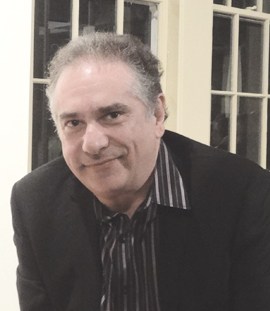It’s never too late to learn more about melanoma as beach season approaches. While some exposure to sunlight can be enjoyable and even healthy, excess sun can be dangerous to your health. Prolonged time in the sun can lead to the development of melanoma, the deadliest form of skin cancer. More than 96,000 Americans will be diagnosed with melanoma this year, and about 7,230 will die from it. The average age of people when it is diagnosed is 63, but melanoma isn’t uncommon even among those younger than 30.

Dr. Erica Friedman, a surgical oncologist and melanoma specialist at NYU Langone Medical Associates–Greenpoint and a member of NYU Langone’s Interdisciplinary Melanoma Cooperative Group, did a yearlong fellowship in Australia where she treated melanoma and other forms of skin cancer. She spoke with us to discuss what people can do to reduce the risk of getting melanoma and what might happen if somebody does, sadly, discover a spot.
RHSR: What can people do to lower their risk and prevent getting melanoma?
EF: I personally recommend applying a physical sunscreen, so something with zinc or titanium as opposed to a chemical sunscreen – this needs to be applied liberally and reapplied often. Wearing sun protective clothing, including [wide-brimmed] hats … that protect the tops of your ears and back of your neck because those are locations that we often forget about. [Lastly] avoiding the high intensity sun between 10 am and 3 pm.
RHSR: What happens when someone does discover a spot?
EF: We look out for the ABCDEs – asymmetry; irregular borders; variation in color within the spot; a diameter greater than six millimeters [about the size of a pencil eraser]; and evolution [of size, shape or color]. So if a patient notices any one of these features, or if there’s a spot that’s bleeding or itchy, they should see a dermatologist. Then the dermatologist will determine if you need a biopsy. Once the biopsy’s performed and, if it comes back as melanoma unfortunately, then you see somebody like me. What I do is talk to my patients about the management of the melanoma, and that’s really dependent on the features. The treatment for the overwhelming majority of melanomas is typically surgery and surgery alone. What’s important when it comes to melanoma is not how big it is on the skin in the patient’s prognosis; what’s important is how thick the melanoma goes deep into the skin – that’s what dictates how much of a margin of normal tissue I [remove]. It also dictates whether or not I’m going to be concerned about spread. The spread is directly proportional to how deep the melanoma goes into the skin.
RHSR: What would you tell a patient, who already had melanoma, to do to prevent developing another [melanoma]?
EF: That answer has multiple steps. One is the prevention of ongoing sun exposure and sunburn by using sunblock; wearing sun-protectant clothing; avoiding high intensity sun in the middle of the day. You also need to get checked regularly by your dermatologist two to four times a year. Then your surgeon who operated on you would likely want to also see you multiple times a year.
Author
-

George Fiala has worked in radio, newspapers and direct marketing his whole life, except for when he was a vendor at Shea Stadium, pizza and cheesesteak maker in Lancaster, PA, and an occasional comic book dealer. He studied English and drinking in college, international relations at the New School, and in his spare time plays drums and fixes pinball machines.
View all posts
George Fiala has worked in radio, newspapers and direct marketing his whole life, except for when he was a vendor at Shea Stadium, pizza and cheesesteak maker in Lancaster, PA, and an occasional comic book dealer. He studied English and drinking in college, international relations at the New School, and in his spare time plays drums and fixes pinball machines.










